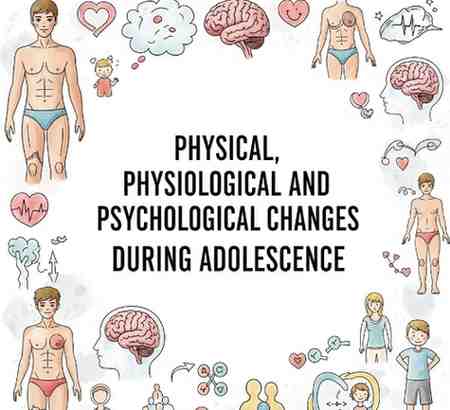
Your Account
Designed by Zeptt Technologies

Adolescence is a transitional phase between childhood and adulthood, typically ranging from 10 to 19 years as per WHO.
This period is characterized by rapid physical growth, hormonal changes, sexual maturation, emotional turbulence, and cognitive development.
Ayurveda describes adolescence as part of Balyavastha, transitioning towards Yauvana avastha, with increasing Pitta predominance and onset of Shukra Dhatu paripakva avastha.
CLASSICAL AYURVEDIC PERSPECTIVE
कालो हि बाल्ये क्रमेण पच्यते धातूनां यौवनं ते परिपक्वता च।
(Ashtanga Hridaya, Uttarasthana 1/8)
Translation: Time causes gradual maturation of Dhatus, culminating in Yauvana (youth).
शुक्राग्निवृद्ध्या देहस्य यौवनं प्रथते शुभम्।
(Charaka Samhita, Sharira Sthana 6/14)
Translation: The increase in Shukra and Agni leads to manifestation of youth.
Ayurveda links the onset of adolescence with Pitta Dosha predominance, governing metabolism, transformation, and hormonal balance.
PHYSICAL CHANGES
Growth Spurt:
Rapid increase in height and weight.
First visible change, more pronounced in females at ~10–12 years and in males at ~12–14 years.
Sexual Maturity (Puberty):
Onset of menarche in girls (~11–13 years).
First nocturnal emission (spermarche) in boys (~12–14 years).
Development of Secondary Sexual Characteristics:
Boys: Deepening of voice, facial hair, broadening of shoulders.
Girls: Breast development, widening of hips, growth of pubic and axillary hair.
Musculoskeletal Changes:
Increase in muscle mass and strength.
Rapid bone growth, leading to temporary clumsiness.
Skin Changes:
Increased sebaceous gland activity, leading to acne.
Body odor changes due to active apocrine glands.
PHYSIOLOGICAL CHANGES
Endocrine Changes:
Activation of the Hypothalamic-Pituitary-Gonadal axis.
Increase in hormones like GnRH, LH, FSH, resulting in testosterone (boys) and estrogen (girls) production.
Metabolic Changes:
Increased Basal Metabolic Rate (BMR).
Enhanced nutritional demand for calcium, iron, proteins.
Menstrual Cycle in Females:
Initially anovulatory cycles become regular over time.
May present with dysmenorrhea, irregular bleeding during adjustment.
Changes in Sleep Pattern:
Shift toward delayed sleep phase, often causing sleep deprivation.
Voice Modulation:
In boys, voice deepens due to enlargement of the larynx and vocal cords.
PSYCHOLOGICAL CHANGES
Cognitive Development:
Shift from concrete to abstract thinking.
Development of logical reasoning, moral judgment, and critical thinking.
As per Piaget, this stage is Formal Operational Stage.
Emotional Variability:
Mood swings due to hormonal changes.
Increased self-consciousness and body image issues.
Social Development:
Desire for independence.
Peer influence becomes strong, often stronger than family.
Formation of identity and personal values.
Behavioral Changes:
Tendency for risk-taking, rebellion, experimentation (smoking, alcohol, etc.).
Emotional instability, possible aggression, or withdrawal.
Mental Health Challenges:
Adolescents are vulnerable to depression, anxiety, eating disorders, and low self-esteem.
Potential for self-harm or suicidal ideation if not addressed.
AYURVEDIC VIEW ON MIND AND EMOTION IN ADOLESCENCE
मनःषष्ठानीन्द्रियाणि प्रकृतिस्तानि कर्मसु।
(Bhagavad Gita Reference, applied in Ayurvedic Psychology)
Translation: The mind, along with the five senses, drives action.
शरीरं च मनश्चैव स्थिरं चेष्टं च कारणम्।
(Charaka Samhita Sutra 1/56)
Translation: The body and mind together serve as the basis for all actions.
Imbalance of Rajas and Tamas Gunas during adolescence can lead to impulsivity, confusion, and emotional reactivity.
INTERVENTION STRATEGIES (AYURVEDIC AND MODERN)
Ayurvedic Approach:
Dincharya & Ritucharya to stabilize body rhythms.
Medhya Rasayana (e.g., Mandukaparni, Brahmi, Shankhapushpi) to improve cognition.
Satvavajaya Chikitsa for emotional stability.
Balanced Ahara-Vihara to support growth and control Pitta-related symptoms.
Modern Recommendations:
Health education on puberty, reproductive health, and personal hygiene.
Counseling and emotional support.
Nutritional supplementation: Iron, calcium, folic acid.
Encouraging physical activities and creative outlets.
Creating supportive environments at home and school.